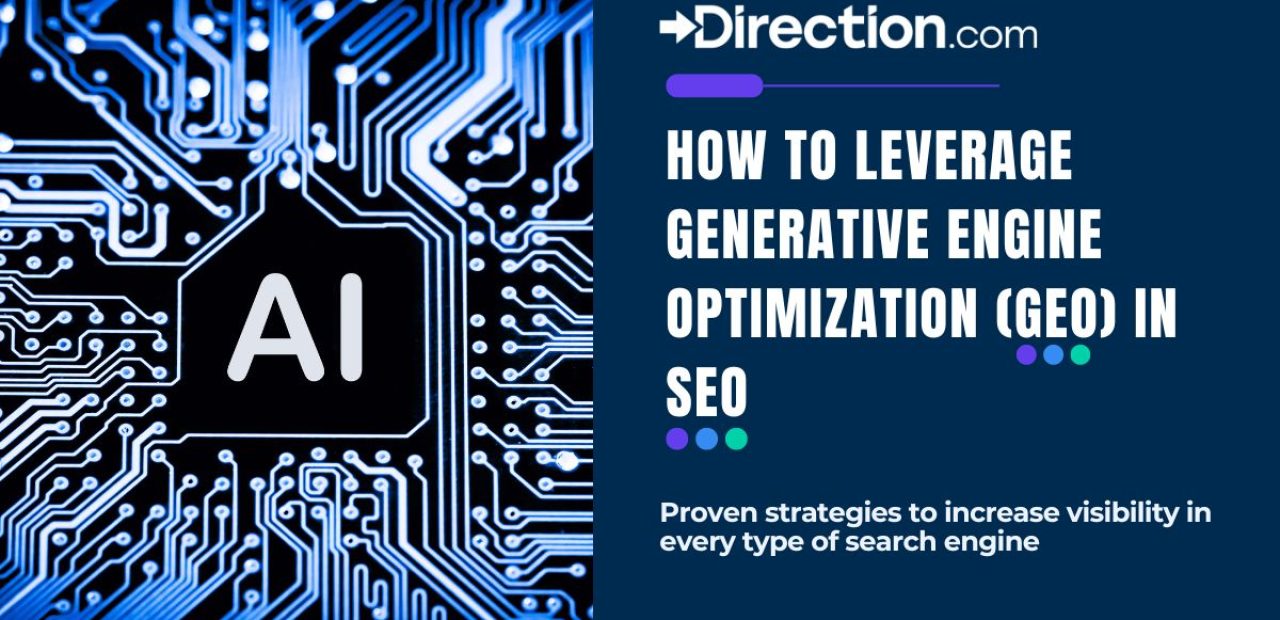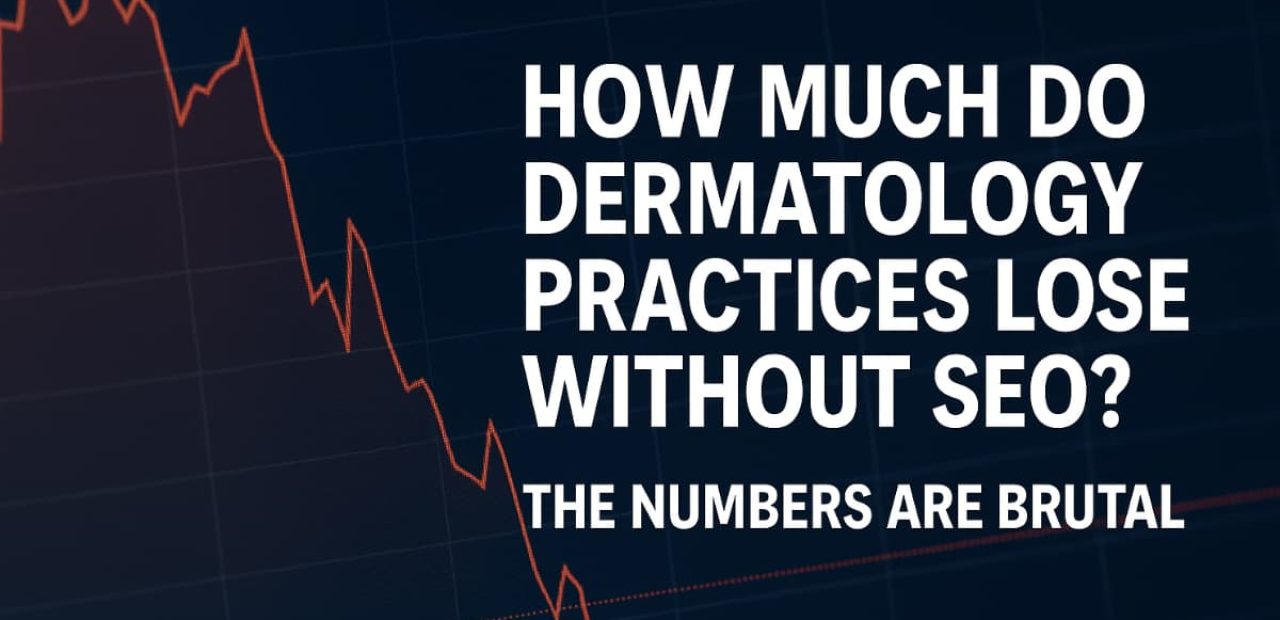You’re watching competitors dominate search results while your expertly crafted content sits unnoticed. I know the frustration – you pour time and resources into creating valuable content, only to see minimal engagement and fewer leads than expected. This scenario plays out daily for businesses across industries, from healthcare practices struggling with patient acquisition to professional services fighting for visibility.
The missing piece isn’t content quality – it’s strategic content sharing. Every piece of content you create represents an investment that should work harder for your business. When you understand how to share content effectively, that investment compounds, driving traffic, building authority, and generating the consistent leads your business deserves.
Key Takeaways: What You’ll Learn
- Strategic Content Sharing increases website traffic by 150% and lead generation by 230% on average
- Multi-Platform Distribution amplifies your content’s reach across 5–7 customer touchpoints before purchase decisions
- Healthcare-Specific Strategies that build patient trust while maintaining HIPAA compliance and professional standards
- Proven Implementation Framework with measurable ROI through proper analytics tracking and performance optimization
- Industry Applications for professional services, technology companies, and other sectors beyond healthcare
Why Is Sharing Content Important for Your Business Growth?
The Strategic Sharing vs. Digital Noise Misconception
Let’s address the elephant in the room: many businesses think content sharing just means posting on social media and hoping for the best. That’s not strategic sharing – that’s digital noise. Real content sharing is a deliberate approach to distribution, built on consistency, timing, and channel relevance.
The misconception I hear often is that great content will naturally find its audience. It won’t – and relying on that idea means leaving value on the table. As this article from SEMrush points out, understanding how people search is critical to getting your content in front of the right audience. Strategic sharing turns your static assets into lead-generating tools that continue working long after you hit publish.
The Data Behind Strategic Content Sharing
Consider this reality: most marketers cite lead generation as their top priority, yet many still judge success primarily through organic traffic metrics. According to WPForms, generating leads and traffic is the biggest challenge for over 60% of marketers, but solving that challenge means aligning goals with how success is measured. Effective content sharing bridges this gap by turning traffic into engagement and qualified leads.
Businesses that share content systematically see measurable improvements in brand visibility, rankings, and conversions. Your content isn’t just information, it’s an asset that delivers value when shared intentionally.
Real-World Transformation Results
I’ve worked with many healthcare practices and professional service providers who transformed their marketing results through strategic content sharing. The difference isn’t just the content itself – it’s how it’s distributed, amplified, and leveraged across channels to support SEO, generate backlinks, and drive sustained business growth. Whether you’re building local content for search visibility or developing a backlink strategy to boost rankings, consistent sharing is what keeps your content working long after it’s published.
Content Sharing Impact Timeline
Week 1-2: Initial Distribution
Content reaches immediate network, early engagement begins
Month 1: SEO Benefits
Search rankings improve, organic traffic increases
Month 3: Authority Building
Brand recognition grows, backlinks accumulate
Month 6+: Compounding Results
Sustained lead generation, established thought leadership
What Drives Real Success in Content Sharing
- Strategic Distribution: Moving beyond random social posts to calculated placement across relevant channels
- Audience Alignment: Matching content format and messaging to specific audience segments and their preferred platforms
- Value Amplification: Repurposing single pieces of content into multiple formats that serve different consumption preferences
- Relationship Building: Using shared content as conversation starters that develop into business relationships
- Authority Establishment: Consistent sharing that positions you as the go-to expert in your field
What Is Content Sharing and Why It Matters More Than Ever
Content sharing encompasses every method of distributing your created content beyond its original location. This includes social media distribution, email marketing, guest posting, podcast appearances, press releases, and strategic partnerships. It’s the systematic approach to ensuring your content reaches the right people at the right time through the right channels.
The digital landscape has fundamentally changed how audiences discover and consume information. Your potential customers aren’t sitting on your website waiting for new content – they’re scattered across dozens of platforms, consuming information during brief moments throughout their day. Content sharing meets them where they are.
Modern content sharing transcends traditional boundaries. A single blog post becomes a social media series, an email newsletter feature, a podcast discussion topic, and source material for speaking engagements. This multiplication effect maximizes the return on your content investment while serving different learning styles and consumption preferences.
The evolution of content consumption patterns:
- Multi-Platform Behavior: Audiences engage with brands across 5-7 different touchpoints before making decisions
- Micro-Moment Engagement: People consume content in short bursts throughout the day, requiring optimized sharing for different contexts
- Trust Through Repetition: Consistent presence across platforms builds familiarity and credibility over time
- Social Validation: Seeing content shared by trusted sources increases perceived value and likelihood of engagement
The competitive advantage lies in understanding that content sharing isn’t about volume – it’s about strategic presence. Your goal is to be visible when your ideal customers are ready to engage, regardless of which platform or format they prefer.
The Strategic Benefits of Sharing Content

The most immediate benefit you’ll experience is improved search engine visibility. When you share content, you are increasing the chances that people will see your content and click on it. The more traffic you have to your website, the better your SEO ranking will be. This traffic boost signals to search engines that your content provides value, leading to improved rankings for relevant keywords.
Content sharing creates a multiplier effect for backlink acquisition. When your content appears across multiple platforms, it increases the likelihood that other websites will discover and link to it. These natural backlinks are among the strongest ranking factors in Google’s algorithm, helping establish your domain authority over time.
Direct SEO Benefits of Strategic Content Sharing
- Increased Click-Through Rates: More distribution points mean more opportunities for users to discover and visit your content
- Enhanced Social Signals: Engagement across social platforms provides positive signals to search algorithms
- Improved Dwell Time: Audiences arriving from shared content often have higher engagement rates and longer session durations
- Keyword Diversification: Sharing across platforms helps you rank for related and long-tail keyword variations
- Local SEO Benefits: Platform-specific sharing can improve visibility for location-based searches
Brand awareness expansion happens exponentially through strategic sharing. Each share exposes your brand to new networks, creating visibility among audiences who might never have discovered you otherwise. This expanded reach often leads to more branded searches, a positive ranking signal and a sign of growing recognition. As explained in why branding plays a vital role, brand perception directly impacts trust, clicks, and long-term SEO performance.
Lead generation improves significantly when content sharing is executed strategically. Different platforms attract different audience segments at various stages of the buying journey. By maintaining consistent presence across relevant channels, you capture leads regardless of where they prefer to engage with content.
Content Sharing Performance Metrics
Based on performance trends after 6 months of strategic content sharing. Individual results may vary by industry and strategy.
The Compounding Effect of Consistent Content Sharing
Your first shared piece might generate modest engagement, but consistent sharing builds momentum. Audiences begin recognizing your brand across platforms, leading to increased trust and higher conversion rates. This momentum creates sustainable growth that continues long after individual sharing activities.
For healthcare practices specifically, content sharing addresses unique challenges like patient acquisition and trust building. When potential patients see your expertise discussed across multiple platforms – from your blog to professional forums to social media – it establishes the credibility necessary for healthcare decision-making.
Industry-Specific Content Sharing Strategies
Healthcare providers face unique content sharing considerations that require specialized approaches. Patient privacy regulations, professional standards, and the sensitive nature of health information demand careful strategy development. However, these constraints don’t limit effectiveness when approached correctly.
Healthcare Content Sharing Strategies
- Educational Content Focus: Share preventive care tips, treatment explanations, and health awareness content that provides value without violating privacy
- Professional Network Utilization: Leverage medical professional networks and healthcare-specific platforms for peer-to-peer sharing
- Patient Success Stories: With proper consent, share anonymized case studies and treatment outcomes that demonstrate expertise
- Community Health Engagement: Participate in local health initiatives and share related content to build community trust
- Continuing Education: Share insights from medical conferences, research findings, and professional development activities
Professional service providers benefit from thought leadership positioning through strategic content sharing. Law firms, accounting practices, and consulting businesses can establish expertise by sharing insights across professional networks and industry publications.
The key for professional services lies in demonstrating competence through shared content while maintaining appropriate professional boundaries. This often means sharing process insights, industry analysis, and educational content rather than specific client work.
Effective Strategies for Other Industries
- Technology Companies: Focus on innovation stories, technical tutorials, and industry trend analysis across tech-focused platforms
- Financial Services: Share market insights, financial planning tips, and regulatory updates through professional networks and educational channels
- Manufacturing: Highlight innovation, sustainability initiatives, and industry expertise through trade publications and professional associations
- Retail Businesses: Emphasize customer experiences, product education, and community involvement across social and local platforms
The common thread across successful industry-specific sharing is understanding your audience’s preferred information consumption patterns and meeting them where they naturally engage with professional content.
Ready to Transform Your Content Strategy?
Stop letting your valuable content sit unnoticed. Start generating consistent leads through strategic content sharing.
Get Your Content Strategy Audit- ✓ Healthcare SEO Expertise
- ✓ Strategic Content Distribution
- ✓ Proven Lead Generation Results
- ✓ Industry-Specific Compliance
Essential Types of Content That Drive Engagement
Blog posts remain the foundation of most content sharing strategies, but their effectiveness depends on format and distribution. Long-form content will remain relevant and valuable for your target audience over time. Comprehensive articles that thoroughly address topics perform better across sharing platforms and provide more opportunities for internal linking and SEO optimization.
Video content has become increasingly important for content sharing success. Videos generate higher engagement rates across most platforms and provide opportunities for repurposing into multiple formats. A single educational video can become blog post content, social media clips, podcast material, and email newsletter features.
High-Performing Content Types for Sharing
- Educational Guides: Comprehensive how-to content that addresses specific audience problems and provides actionable solutions
- Industry Insights: Analysis of trends, regulations, or developments that affect your target audience’s professional decisions
- Case Studies: Success stories that demonstrate your expertise while providing valuable lessons for your audience
- Interactive Content: Polls, surveys, and assessment tools that encourage engagement and provide value to participants
- Visual Content: Infographics, charts, and visual summaries that make complex information easily shareable
Infographics deserve special attention for content sharing because they perform exceptionally well across visual platforms. They condense complex information into shareable formats that work effectively on social media, professional networks, and industry publications.
The most successful content sharing strategies involve creating cornerstone content that can be adapted for multiple formats and platforms. A comprehensive research report might become a series of blog posts, social media graphics, podcast episodes, and conference presentation material.
Where High-Performing Content Wins
Educational Guides
Boost SEO rankings and nurture leads in email funnels.
Industry Insights
Position your brand as a thought leader on LinkedIn and in newsletters.
Case Studies
Support sales teams and convert leads by showing real results.
Interactive Content
Increase engagement on social and collect valuable user data.
Visual Content
Drive backlinks and shares by making complex ideas easy to scan.
How to Create a Content Sharing Strategy That Works
Successful content sharing begins with audience mapping, understanding where your ideal customers consume information and how they prefer to engage with content. This mapping informs platform selection, content formatting, and distribution timing decisions.
Strategic Planning Steps:
- Audience Analysis: Identify your target demographics’ preferred platforms, content consumption habits, and engagement patterns
- Platform Prioritization: Focus initial efforts on 3-4 platforms where your audience is most active rather than attempting broad distribution
- Content Calendar Development: Plan sharing activities around content creation schedule, industry events, and audience engagement patterns
- Format Optimization: Adapt content for each platform’s unique requirements and user expectations
- Engagement Protocol: Establish processes for responding to comments, questions, and sharing opportunities
Timing plays a crucial role in content sharing effectiveness. Different platforms have optimal posting times based on user activity patterns. Professional platforms like LinkedIn see higher engagement during business hours, while consumer-focused platforms often perform better during evening and weekend periods.
Cross-platform coordination ensures consistent messaging while respecting each platform’s unique culture and expectations. The same content might be presented as a detailed LinkedIn article, Instagram story series, Twitter thread, and email newsletter feature – each optimized for its specific audience and format requirements.
Implementation Best Practices
- Consistent Voice: Maintain brand personality across all sharing platforms while adapting tone for each audience
- Value-First Approach: Prioritize providing value over promotional messaging in all shared content
- Community Building: Use shared content as conversation starters to build relationships with audience members
- Strategic Hashtag Use: Research and utilize relevant hashtags to increase discoverability without overuse
- Cross-Promotion: Leverage different platforms to drive traffic to high-value content and lead generation assets
Measuring the Impact of Your Content Sharing Efforts
Effective measurement goes beyond vanity metrics like likes and shares to focus on business-relevant outcomes. Track metrics that directly relate to your business objectives, such as website traffic, lead generation, and conversion rates from shared content.
Key Performance Indicators for Content Sharing
- Traffic Generation: Monitor referral traffic from each platform to understand which sharing activities drive the most website visits
- Engagement Quality: Analyze comment quality, discussion depth, and interaction types to gauge audience interest and content relevance
- Lead Conversion: Track how shared content contributes to lead generation and conversion throughout your sales funnel
- Brand Recognition: Monitor brand mention increases and search volume growth for branded terms
- Authority Building: Track backlink acquisition and domain authority improvements linked to content sharing activities
Google Analytics provides detailed insights into how shared content performs across different traffic sources. Set up UTM parameters for shared links to track performance by platform, campaign, and content type. This data helps optimize future sharing strategies and resource allocation.
Social media analytics tools provide platform-specific insights into audience behavior, optimal posting times, and content performance patterns. Use these insights to refine your sharing strategy and improve engagement rates over time.
Long-Term Measurement Considerations
Content sharing impact often compounds over time, making long-term tracking essential. A piece of content shared consistently across platforms might show modest initial results but generate significant traffic and leads months later as it gains search engine visibility and social proof.
Regular strategy assessment helps identify successful patterns and areas for improvement. Monthly reviews of sharing performance, audience growth, and business impact ensure your strategy evolves with changing platform algorithms and audience preferences.
The most successful content sharing strategies balance consistent activity with strategic optimization based on performance data. This approach ensures your content reaches the right audiences while maximizing return on your content investment.
Ready to Maximize the Value of Your Content?
If you’re putting time and effort into creating great content, don’t let it sit unnoticed. Sharing it strategically and consistently is what turns content into conversions, traffic into trust, and visibility into long-term brand growth.
Whether you’re writing blog posts, launching a video series, or promoting new services through social media and press releases, content sharing is the engine that keeps your digital presence running. It’s one of the most cost-effective ways to build authority, improve SEO, and stay top-of-mind with your audience.
Need help building a content strategy that actually drives results? The team at Direction.com is here to help you plan, publish, and promote content that ranks, converts, and scales. Reach out today to start growing your business through smarter content sharing.
FAQs About Sharing Content for SEO and Business Growth
Why is sharing content important for SEO?
Sharing content helps improve visibility, build backlinks, and increase engagement across your digital channels. These are all signals that search engines consider when ranking pages. The more exposure your content receives, the more opportunities you create to earn clicks, links, and brand recognition. Over time, this contributes to stronger domain authority and better rankings in organic search, supported by principles of EEAT in SEO, which reward content that demonstrates credibility and trust.
What types of content should I be sharing?
The most effective content types to share include blog posts, social media updates, videos, press releases, eBooks, and even podcasts. Each serves a different purpose. Blog posts can answer customer questions, videos can showcase expertise or products, and social posts can drive quick engagement. Focus on high-quality content that aligns with your brand and offers value to your audience, then repurpose it across multiple platforms.
How often should I share my content?
Consistency is key when it comes to sharing content. You should share each new piece of content when it’s published, then continue to reshare it over time. For example, a blog post can be promoted on social media the day it goes live, featured in a newsletter the following week, and reposted a month later with a fresh caption. Evergreen content should be recycled quarterly to keep it active in your distribution channels without becoming repetitive.
Where should I be sharing my content?
Your content should live beyond your website. Share it through email marketing, social media platforms, your Google Business Profile, and relevant industry groups or forums. Press release distribution and guest blogging can also extend your reach. The more touchpoints you create, the more likely your content is to reach the right audience. Choose platforms based on where your audience spends time and tailor the messaging accordingly.
How can I tell if my content sharing strategy is working?
Use tools like Google Analytics, Search Console, and social insights to track traffic, engagement, and conversions. Monitor where your visitors are coming from and how they interact with your site. Look at metrics like time on page, bounce rate, backlink growth, and form submissions. If your shared content is driving qualified traffic and supporting business goals, you are on the right track. If not, reassess your messaging, formats, or sharing content frequency.






